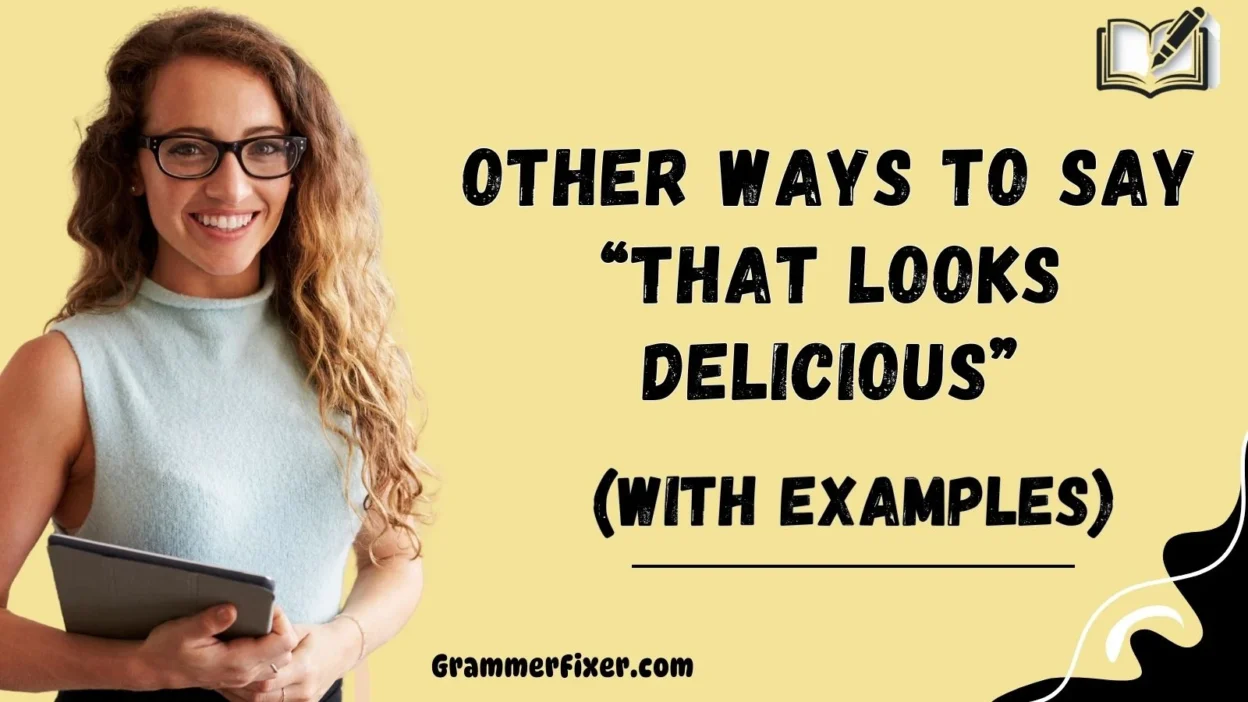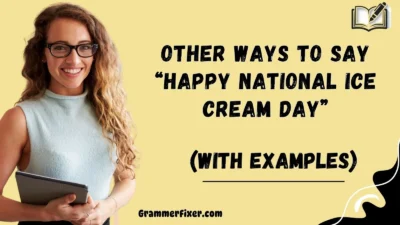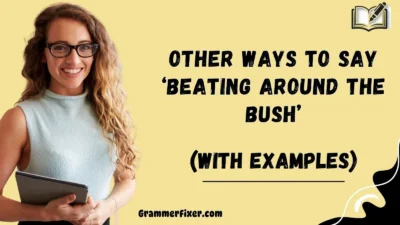Finding the right words to express care and appreciation can make even the simplest moments feel more personal and meaningful. When someone prepares or shares food, saying “That looks delicious” is a natural reaction—but it can sometimes feel repetitive or too common. By exploring alternative phrases, you can show sincerity, warmth, and admiration for the effort, artistry, and love put into a meal.
Below, we’ll look at 30 thoughtful alternatives, complete with meanings, examples, and usage notes, so you can express yourself with more depth and personality.
What Does “That Looks Delicious” Mean?
The phrase “That looks delicious” is a warm compliment often used to express admiration for how appetizing food appears.
It suggests that the visual appeal of the dish makes you imagine it will taste enjoyable, flavorful, and satisfying.
When to Use “That Looks Delicious”?
You can use this phrase when:
- Complimenting a home-cooked meal made by family or friends.
- Reacting to food photos online or on social media.
- Acknowledging a dish at a restaurant before tasting.
- Showing appreciation at gatherings like dinners, parties, or celebrations.
Is It Professional/Polite to Say “That Looks Delicious”?
Yes—it is polite and appropriate in most casual and semi-formal contexts. However, in strictly professional settings (e.g., business lunches), you may want to choose slightly more refined phrases like “That looks exquisite” or “What an impressive presentation.”
Pros or Cons
Pros:
- Warm, genuine, and easy to say.
- Universally understood and positive.
- Shows appreciation without being overcomplicated.
Cons:
- Can feel generic or repetitive if used too often.
- Doesn’t always capture the depth of admiration for culinary effort.
- Sometimes sounds rushed or automatic.
1. That Looks Tasty
Meaning: Suggests that the food will be enjoyable and flavorful.
Detailed Explanation: A casual, friendly way to show approval of food’s appearance without being too formal.
Scenario Example: “Wow, that sandwich looks tasty—I’m craving one now.”
Best Use: Everyday meals, casual conversations with friends or family, social media comments.
Worst Use: High-end restaurants or professional dining events where a more refined word would sound better.
Tone: Informal, warm, approachable.
2. That Looks Mouthwatering
Meaning: Implies that the sight of the dish is so tempting it makes you salivate.
Detailed Explanation: Focuses on the physical reaction to seeing appetizing food, emphasizing sensory appeal.
Scenario Example: “Those sizzling fajitas look absolutely mouthwatering.”
Best Use: Online food posts, dinner parties, enthusiastic praise at restaurants.
Worst Use: Extremely formal settings where such a vivid, bodily reaction might feel inappropriate.
Tone: Excited, expressive, enthusiastic.
3. That Looks Scrumptious
Meaning: Suggests rich flavors and indulgence.
Detailed Explanation: A charming and playful word often used for sweets, baked goods, or hearty meals.
Scenario Example: “That frosted chocolate cake looks scrumptious.”
Best Use: Complimenting desserts, comfort food, or home-cooked meals.
Worst Use: Business dinners or fine dining events where it may sound childish or too informal.
Tone: Affectionate, playful, enthusiastic.
4. That Looks Delectable
Meaning: A sophisticated way to say the food seems delicious.
Detailed Explanation: Highlights refinement and artistry, often used in gourmet or upscale contexts.
Scenario Example: “This risotto looks absolutely delectable.”
Best Use: Professional settings, fine dining, food writing or reviews.
Worst Use: Everyday meals like sandwiches or casual snacks, where it may feel exaggerated.
Tone: Elegant, refined, polite.
5. That Looks Appetizing
Meaning: Suggests that the dish stimulates hunger and anticipation.
Detailed Explanation: A neutral and versatile compliment that emphasizes visual appeal.
Scenario Example: “Your vegetable stir-fry looks so appetizing.”
Best Use: Formal, casual, or even professional settings.
Worst Use: When used too often online, it may feel stiff or impersonal compared to warmer alternatives.
Tone: Balanced, polite, appreciative.
6. That Looks Wonderful
Meaning: A broad compliment showing admiration for the overall presentation and effort.
Detailed Explanation: This phrase highlights not only the food’s flavors but also its aesthetic appeal and the care put into preparing it.
Scenario Example: “Your charcuterie board looks wonderful—so colorful and inviting.”
Best Use: Praising food presentation at family dinners, parties, or social media posts.
Worst Use: In fine dining or gourmet settings where a more refined word like “exquisite” would sound more fitting.
Tone: Warm, genuine, appreciative.
7. That Looks Amazing
Meaning: Expresses high admiration for the dish, combining visual appeal with excitement.
Detailed Explanation: A versatile phrase that conveys both enthusiasm and amazement at food’s appearance.
Scenario Example: “Wow, that sushi platter looks amazing—I can’t wait to try it.”
Best Use: Social occasions, food photos online, or casual compliments.
Worst Use: In strictly professional dining, as it may sound too casual or exaggerated.
Tone: Excited, enthusiastic, friendly.
8. That Looks Delightful
Meaning: Suggests that the dish appears pleasing, inviting, and likely to bring joy.
Detailed Explanation: A softer, more graceful compliment that emphasizes the pleasantness and aesthetic charm of a dish.
Scenario Example: “This summer salad looks absolutely delightful with all those fresh fruits.”
Best Use: Semi-formal dinners, afternoon teas, family gatherings, or social posts.
Worst Use: For very casual meals (like fast food), it may sound overly formal or out of place.
Tone: Gentle, appreciative, charming.
9. That Looks Perfect
Meaning: Expresses the idea that the dish is flawless in its appearance and likely in taste.
Detailed Explanation: A strong compliment that implies the cook or chef has executed the dish exactly right.
Scenario Example: “That cheesecake looks absolutely perfect—just like something out of a magazine.”
Best Use: Praising a dish that is beautifully plated or carefully prepared, especially at special occasions.
Worst Use: Everyday, simple meals (like cereal or toast), where it may feel insincere or exaggerated.
Tone: Admiring, strong, affirming.
10. That Looks Splendid
Meaning: Suggests the dish is grand, impressive, and visually stunning.
Detailed Explanation: A somewhat formal compliment that elevates the dish, making it sound more celebratory.
Scenario Example: “The holiday roast looks absolutely splendid on the table.”
Best Use: Festive occasions, formal dinners, or when describing lavish meals.
Worst Use: In casual dining with friends or children—it may sound old-fashioned or too grand.
Tone: Formal, elegant, celebratory.
11. That Looks Exquisite
Meaning: Suggests the dish is refined, delicate, and of high culinary artistry.
Detailed Explanation: This phrase is often reserved for food that looks sophisticated and carefully crafted, emphasizing the chef’s skill and attention to detail.
Scenario Example: “This plated sushi roll looks absolutely exquisite—the colors are so balanced.”
Best Use: Fine dining, restaurant reviews, or special events where food is presented as an art form.
Worst Use: Everyday, casual meals where such a refined term may feel out of place.
Tone: Elegant, sophisticated, respectful.
12. That Looks Divine
Meaning: Expresses that the dish appears almost heavenly, with otherworldly appeal.
Detailed Explanation: A phrase that conveys deep admiration, often used for desserts or luxurious meals that feel like a special treat.
Scenario Example: “That chocolate lava cake looks absolutely divine.”
Best Use: Romantic dinners, special occasions, or when describing luxurious foods.
Worst Use: For very simple meals (like soup or salad), where it may sound exaggerated.
Tone: Romantic, reverential, indulgent.
13. That Looks Heavenly
Meaning: Suggests that the dish looks so good it feels like a piece of heaven.
Detailed Explanation: Often used for decadent desserts, rich meals, or comforting dishes that promise pure pleasure.
Scenario Example: “That creamy mousse looks absolutely heavenly.”
Best Use: Complimenting indulgent desserts or soulful comfort food.
Worst Use: In professional dining reviews where more precise or culinary terms are expected.
Tone: Warm, indulgent, emotional.
14. That Looks Irresistible
Meaning: Implies that the food is so tempting it cannot be resisted.
Detailed Explanation: Focuses on the magnetism of the dish, suggesting it evokes a strong desire to eat immediately.
Scenario Example: “Those freshly baked cookies look completely irresistible.”
Best Use: Casual compliments, family meals, or food photography comments.
Worst Use: Overused in marketing or ads, where it may lose authenticity.
Tone: Tempting, enthusiastic, expressive.
15. That Looks Impressive
Meaning: Suggests that the dish shows remarkable effort and skill.
Detailed Explanation: Goes beyond taste, acknowledging the chef’s creativity, presentation, and culinary expertise.
Scenario Example: “This layered lasagna looks truly impressive.”
Best Use: Praising someone’s cooking skills at home or in semi-formal dining.
Worst Use: For simple or everyday foods, it may sound a little forced.
Tone: Respectful, admiring, appreciative.
16. That Looks Fantastic
Meaning: Suggests that the dish is outstanding and evokes excitement.
Detailed Explanation: A high-energy phrase that captures both visual appeal and positive anticipation of flavor.
Scenario Example: “Wow, your homemade pizza looks absolutely fantastic.”
Best Use: Complimenting friends, family, or social media posts.
Worst Use: Very formal settings, where it may sound too casual.
Tone: Enthusiastic, casual, friendly.
17. That Looks Incredible
Meaning: Suggests that the dish is so good it’s almost hard to believe.
Detailed Explanation: A dramatic compliment that emphasizes the wow factor of a dish.
Scenario Example: “This steak with garlic butter looks just incredible.”
Best Use: When truly amazed by a dish’s presentation or preparation.
Worst Use: If overused casually, it may lose its impact and feel exaggerated.
Tone: Amazed, excited, expressive.
18. That Looks Lovely
Meaning: Suggests the dish is pleasant, inviting, and likely to bring enjoyment.
Detailed Explanation: A gentle compliment that emphasizes both appearance and emotional warmth.
Scenario Example: “That summer salad looks lovely with all the fresh greens.”
Best Use: Family meals, friendly gatherings, or casual dining compliments.
Worst Use: In professional reviews, it may feel too vague or informal.
Tone: Gentle, warm, caring.
19. That Looks Flawless
Meaning: Suggests that the dish is perfectly executed without errors.
Detailed Explanation: A strong compliment often reserved for professional plating or chef-quality meals.
Scenario Example: “The frosted cake looks absolutely flawless—not a detail out of place.”
Best Use: Praising expertly plated dishes, special events, or restaurant creations.
Worst Use: For home-cooked casual meals, it may feel too intense or overly formal.
Tone: Strong, admiring, formal.
20. That Looks Sensational
Meaning: Suggests that the dish has a stunning effect and creates a strong positive reaction.
Detailed Explanation: A dramatic, expressive phrase often used when the dish both looks beautiful and seems bursting with flavor.
Scenario Example: “That sizzling steak looks absolutely sensational.”
Best Use: Complimenting restaurant dishes, holiday meals, or elaborate spreads.
Worst Use: Everyday foods, where it may sound too over the top.
Tone: Expressive, dramatic, enthusiastic.
21. That Looks Extraordinary
Meaning: Suggests that the dish is beyond ordinary, standing out for its quality or presentation.
Detailed Explanation: A phrase that elevates the meal, implying it is exceptional and rarely seen.
Scenario Example: “That seafood platter looks truly extraordinary.”
Best Use: Special occasions, upscale restaurants, or when someone has put great effort into a dish.
Worst Use: Everyday, simple meals where such a word might feel excessive.
Tone: Admiring, formal, celebratory.
22. That Looks Spectacular
Meaning: Suggests the dish makes a powerful visual impact and leaves an impression.
Detailed Explanation: Focuses on the appearance and presentation, often used for meals that are vibrant and artistic.
Scenario Example: “That birthday cake looks absolutely spectacular.”
Best Use: Festive meals, holiday feasts, or elaborately decorated dishes.
Worst Use: For simple snacks where such a dramatic word would feel out of place.
Tone: Dramatic, energetic, impressed.
23. That Looks Outstanding
Meaning: Suggests the dish is of superior quality and stands out from the rest.
Detailed Explanation: A strong and professional-sounding compliment that works in both casual and formal settings.
Scenario Example: “This risotto looks truly outstanding—like something from a fine dining menu.”
Best Use: Formal dinners, restaurant reviews, or acknowledging culinary skills.
Worst Use: In casual online chats, it may sound too serious or heavy.
Tone: Respectful, admiring, formal.
24. That Looks Beautiful
Meaning: Suggests the dish is not only appetizing but also aesthetically pleasing.
Detailed Explanation: Highlights the visual artistry of the dish, focusing on how it’s presented and arranged.
Scenario Example: “That fruit tart looks absolutely beautiful—so vibrant and fresh.”
Best Use: Complimenting plated desserts, colorful salads, or visually striking meals.
Worst Use: For plain foods (like oatmeal), where it may sound forced.
Tone: Warm, artistic, appreciative.
25. That Looks Tempting
Meaning: Suggests the food is so inviting it draws you in, creating a desire to eat immediately.
Detailed Explanation: Emphasizes the allure and magnetism of food, often associated with flavor anticipation.
Scenario Example: “That cheesy pizza looks incredibly tempting.”
Best Use: Casual conversations, food photos, or when admiring snacks and comfort foods.
Worst Use: Formal dining settings, where it may feel too playful.
Tone: Inviting, playful, enthusiastic.
26. That Looks Irresistibly Good
Meaning: Suggests the dish is so appealing it’s impossible to resist eating.
Detailed Explanation: A more personal, enthusiastic variation of “irresistible,” emphasizing both looks and desire.
Scenario Example: “That bowl of creamy pasta looks irresistibly good.”
Best Use: Complimenting friends’ or family meals, comfort food, or casual dishes.
Worst Use: Overused in advertisements, where it feels generic.
Tone: Excited, casual, heartfelt.
27. That Looks Artistic
Meaning: Suggests the food is beautifully arranged, showing creativity and skill.
Detailed Explanation: Recognizes food as a form of art, complimenting the plating and aesthetic details.
Scenario Example: “That sushi presentation looks so artistic.”
Best Use: Fine dining, food competitions, or praising a chef’s presentation skills.
Worst Use: Simple meals, where it may sound out of place.
Tone: Respectful, admiring, creative.
28. That Looks So Inviting
Meaning: Suggests that the dish feels warm, approachable, and welcoming.
Detailed Explanation: Focuses less on artistry and more on the comforting appeal of food.
Scenario Example: “That bowl of soup looks so inviting on a cold day.”
Best Use: Family meals, home-cooked dishes, or comfort food compliments.
Worst Use: Professional settings where a more polished compliment is expected.
Tone: Comforting, warm, genuine.
29. That Looks So Fresh
Meaning: Suggests that the dish looks healthy, vibrant, and newly prepared.
Detailed Explanation: Emphasizes the fresh ingredients, colors, and nutritional appeal.
Scenario Example: “That garden salad looks so fresh and colorful.”
Best Use: Healthy meals, vegetable dishes, salads, or summer spreads.
Worst Use: With desserts or indulgent foods, where freshness isn’t the main appeal.
Tone: Positive, refreshing, natural.
30. That Looks Like a Feast
Meaning: Suggests the dish is lavish, abundant, and celebratory.
Detailed Explanation: A phrase that emphasizes plentiful food and the feeling of a special occasion.
Scenario Example: “Wow, this dinner spread looks like a true feast.”
Best Use: Holiday dinners, family gatherings, buffets, or celebrations.
Worst Use: Single small dishes, where the word “feast” would feel exaggerated.
Tone: Grand, festive, celebratory.
Conclusion
Choosing the right way to say “That looks delicious” can make your compliment feel more personal, sincere, and thoughtful. From casual words like “tasty” to refined ones like “exquisite,” each phrase highlights a different aspect of food appreciation—whether it’s the visual beauty, the anticipated flavors, or the effort put into preparation.



